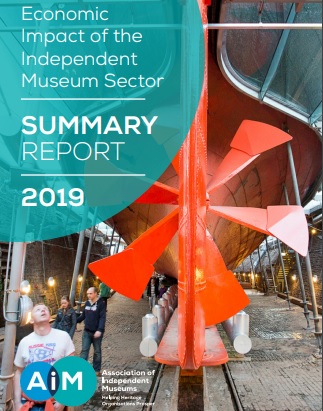Impact of independent museums locally and nationally

|
The Association of Independent Museums (AIM) has published its latest Economic Impact of the Independent Museum Sector report, exploring the fiscal benefits heritage and culture entities deliver locally and nationally.
According to Museums and Heritage Advisor, the report claims the independent museums sector currently supports over 8,900 direct jobs in the UK, or 6,000 full-time equivalent roles. Three quarters of these jobs are situated in the museums’ immediate vicinities.
Further, more than 34,000 regular volunteers contribute almost half a million days per year to the independent museum sector. This free support is said to be worth around £28 million to institutions across the nation.
In terms of visitor contributions to independent museums, more than 24 million people visit these sites every year, spending nearly £440 million. Ten million of these visitors travel outside their local area to do so.
The latest edition of the report received funding support from Arts Council England and was produced in partnership with DC Research and Durnin Research.
Alongside its latest report, AIM also launched a refreshed Economic Impact Toolkit which is available for download. The resource is designed to complement the report and help heritage organisations to estimate their respective economic impact on the economy – both regionally and nationally. These insights are designed to boost advocacy work and improve feedback to funding bodies.
AIM director, Emma Chaplin, said: ‘The 2019 edition of AIM’s Economic Impact Toolkit builds on previous releases, updating key datasets and offering even more levels of analysis.”
Ms Chaplin added: “We feel this easy-to-use tool enables heritage organisations to assess their impact with clarity, helping them highlight the ongoing and significant contribution they make to the economies of their local area, and thus also our national economy.”
[edit] About this article
This article previously appeared in Museums and Heritage Advisor in October 2019. It can be accessed HERE.
Articles by IHBC on Designing Buildings Wiki can be accessed HERE.
[edit] Related articles on Designing Buildings Wiki
IHBC NewsBlog
Old Sarum fire in listed (& disputed) WW1 Hangar - Wiltshire Council has sought legal advice after fire engulfed a listed First World War hangar that was embroiled in a lengthy planning dispute.
UK Antarctic Heritage Trust launches ‘Virtual Visit’ website area
The Trust calls on people to 'Immerse yourself in our heritage – Making Antarctica Accessible'
Southend Council pledge to force Kursaal owners to maintain building
The Council has pledged to use ‘every tool in the toolbox’ if urgent repairs are not carried out.
HE’s Research Magazine publishes a major study of the heritage of England’s suburbs
The article traces the long evolution of an internal programme to research 200 years of suburban growth
IHBC Context 183 Wellbeing and Heritage published
The issue explores issues at the intersection of heritage and wellbeing.
SAVE celebrates 50 years of campaigning 1975-2025
SAVE Britain’s Heritage has announced events across the country to celebrate bringing new life to remarkable buildings.
IHBC Annual School 2025 - Shrewsbury 12-14 June
Themed Heritage in Context – Value: Plan: Change, join in-person or online.
200th Anniversary Celebration of the Modern Railway Planned
The Stockton & Darlington Railway opened on September 27, 1825.
Competence Framework Launched for Sustainability in the Built Environment
The Construction Industry Council (CIC) and the Edge have jointly published the framework.
Historic England Launches Wellbeing Strategy for Heritage
Whether through visiting, volunteering, learning or creative practice, engaging with heritage can strengthen confidence, resilience, hope and social connections.














